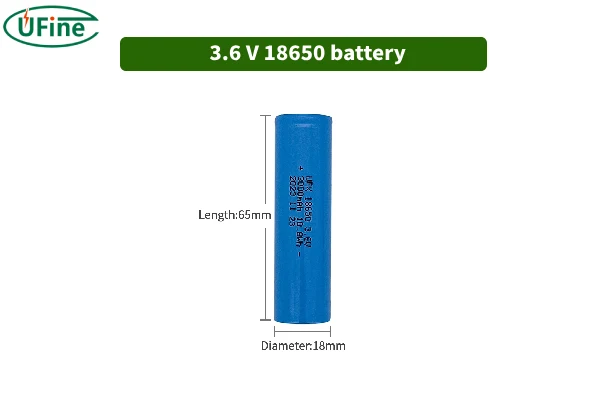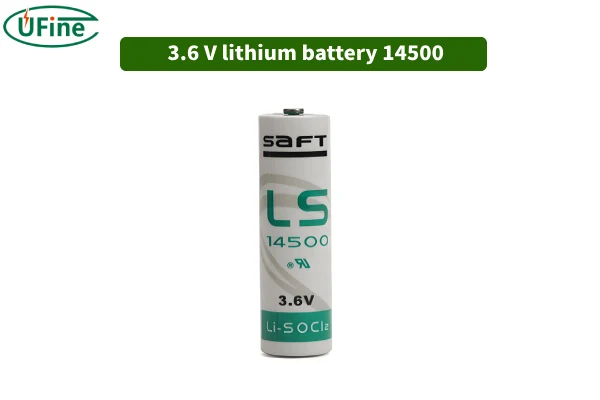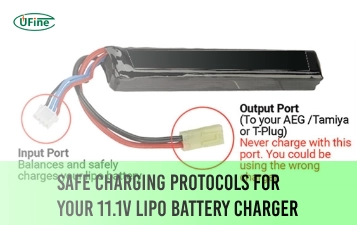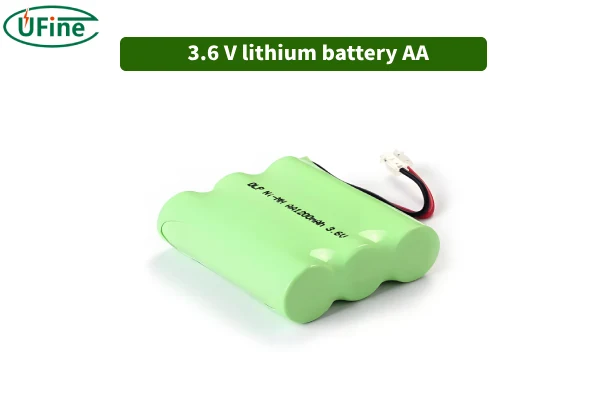Part 1. 3.6 V lithium batteries overview
Let’s embark on a journey into the fascinating world of 3.6V lithium batteries. These power-packed cells are the unsung heroes behind many of our favorite gadgets, from our trusty flashlights to sophisticated medical devices. But have you ever wondered why 3.6V is such a magic number? Well, let’s unravel that mystery together.
Why 3.6 V?
The 3.6V rating isn’t just a random number; it stems from the chemistry within the lithium cells. Lithium-ion batteries typically have a nominal voltage range of 3.6V to 3.7V. However, 3.6V batteries are engineered to offer a sweet spot between power and size. They provide ample energy while maintaining a compact form factor, making them ideal for a variety of applications.
The Advantages of 3.6V
Why not 3.5V or 3.7V exclusively, you ask? The 3.6V lithium battery strikes a perfect balance. It offers high energy density, meaning it can store a significant amount of energy without being bulky. Additionally, these batteries have a long lifespan, often outlasting other types of batteries. This makes them perfect for both industrial applications and everyday consumer electronics.
Part 2. The difference between 3.6 V and 3.7 V li-ion batteries
Now, you might be scratching your head, wondering about the difference between 3.6V and 3.7V lithium batteries. They sound almost the same, right? Well, let’s dive into the details.
In-Depth Comparison
- Nominal Voltage: The nominal voltage of a 3.6V battery is 3.6V, while for 3.7V batteries, it’s slightly higher at 3.7V. This small difference can affect the performance and compatibility with certain devices.
- Full Charge Voltage: When fully charged, a 3.6V battery typically reaches 4.1V, whereas a 3.7V battery can go up to 4.2V. This means the 3.7V battery can potentially store a little more energy.
- Cycle Life: 3.6V batteries generally offer a longer cycle life, meaning they can be recharged more times (usually between 500-1000 cycles) before their capacity starts to noticeably drop. On the other hand, 3.7V batteries might only last for 300-500 cycles.
- Energy Density: If you’re looking for a battery that can hold more power, 3.7V batteries might have a slight edge due to their higher energy density.
- Price: 3.6V batteries are usually cheaper than their 3.7V counterparts, making them a cost-effective option for many applications.
- Usage: You’ll often find 3.6V batteries in industrial and medical devices because of their reliability and safety. In contrast, 3.7V batteries are more common in consumer electronics like smartphones and laptops.
- Safety: Safety first! 3.6V batteries tend to have better safety features, making them suitable for critical applications where reliability is paramount.
Part 3. 3.6V lithium battery 18650

Now, let’s talk about the 3.6V lithium battery 18650, a favorite among many users for good reasons.
Features
- High Capacity: These batteries often range from 2000mAh to 3500mAh, providing a significant amount of power.
- Durability: Known for their long cycle life, they can be recharged many times before starting to degrade.
Dimensions
The 18650 battery gets its name from its dimensions: 18mm in diameter and 65mm in length. This standardized size makes them easy to replace and find.
Weight
These batteries typically weigh around 45 grams. Not too heavy, not too light—just right.
Applications
- Flashlights: Their high capacity makes them ideal for flashlights, providing bright, long-lasting light.
- Laptops: Commonly used in laptop battery packs, they offer reliable power for extended periods.
- Power Tools: They provide reliable power for heavy-duty applications, making them a favorite for power tools.
Part 4. 3.6 V lithium battery AA
Moving on, let’s dive into the 3.6V lithium battery AA. This is another versatile option that’s widely used.
Features
- Reliable Power: These batteries are suitable for a wide range of devices, from remote controls to toys.
- Rechargeable: One of the best features is that they can be recharged hundreds of times, which is great for both your wallet and the environment.
Dimensions
The AA battery measures 14.5mm in diameter and 50.5mm in length, making it a perfect fit for many household devices.
Weight
These batteries weigh around 15 grams, making them lightweight and easy to handle.
Applications
- Remote Controls: They provide long-lasting power for remote controls, so you’re not constantly swapping out batteries.
- Toys: Perfect for high-energy toys, keeping them running longer and ensuring endless fun.
- Portable Electronics: Suitable for small gadgets that you use daily, like clocks and cameras.
Part 5. 3.6 V lithium battery 14500

Next up is the 3.6V lithium battery 14500, a good balance between size and power.
Features
High Energy Density: These batteries store a lot of power in a relatively small size, making them efficient.
Rechargeable: They have a long cycle life, meaning they can be recharged many times, saving you money in the long run.
Dimensions
The 14500 battery measures 14mm in diameter and 50mm in length, similar to the AA battery but with different chemistry.
Weight
These batteries typically weigh around 19 grams, slightly heavier than AA batteries but still manageable.
Applications
- Flashlights: Compact yet powerful, they are excellent for flashlights, providing bright and reliable light.
- Cameras: Ideal for high-drain devices like cameras, ensuring you capture every moment without worrying about battery life.
- Portable Devices: Perfect for small electronics that need a reliable power source, such as portable fans and mini speakers.
Part 6. 3.6 V rechargeable lithium battery
Let’s talk about the 3.6V rechargeable lithium battery. These batteries are popular for many reasons, and here’s why.
Features
- Eco-Friendly: Because they are rechargeable, they help reduce waste, making them a more environmentally friendly option.
- Cost-Effective: In the long run, rechargeable batteries save you money since you don’t have to keep buying new ones. This is a win-win for both your wallet and the planet.
Dimensions
The dimensions of these batteries can vary depending on the specific type (18650, AA, 14500, etc.), providing flexibility for different applications.
Weight
Similarly, the weight also varies depending on the type, but they generally remain lightweight and easy to handle.
Applications
- Everyday Devices: From remote controls to flashlights, these batteries can power a variety of everyday devices, providing reliable and long-lasting energy.
- Industrial Uses: They are also used in medical devices and industrial equipment due to their reliability and long lifespan, ensuring critical systems remain operational.
Part 7. 3.6 V lithium battery charger
To keep your 3.6V lithium batteries in top shape, you need the right charger. Here’s what you should know.
Charging Voltage
Typically, the charging voltage for these batteries is around 4.1V. This ensures they are properly charged without overloading, maintaining their longevity and performance.
Type of Charger
- Smart Chargers: These chargers adjust the current and voltage to optimize charging, ensuring your batteries last longer and perform better. They often come with features like overcharge protection and temperature control.
- USB Chargers: These are super convenient for everyday use, allowing you to charge your batteries via any USB port, whether it’s from your computer, a power bank, or a wall adapter.
Part 8. How long does a 3.6 V lithium battery last?
So, how long can you expect your 3.6V lithium battery to last? The lifespan of these batteries depends on several factors:
- Usage: High-drain devices will reduce battery life more quickly than low-drain devices. For instance, using a battery in a power-hungry flashlight will drain it faster than in a remote control.
- Maintenance: Proper storage and charging can extend the lifespan of your battery. Avoiding extreme temperatures and overcharging can significantly improve battery life.
Generally, you can expect around 300 to 500 charge cycles. This means you can recharge the battery 300 to 500 times before its capacity drops significantly. For most users, this translates to several years of use, making them a reliable and long-lasting power source.
Part 9. Can you replace a 3.6 V battery with a 3.7 V battery?
Finally, let’s address a common question: Can you replace a 3.6V battery with a 3.7V battery? The short answer is yes, you often can. However, there are a few things to keep in mind.
1. Compatibility
While the voltage difference is small, some sensitive electronics might not handle the higher voltage well. Always check your device’s specifications to ensure compatibility. Using a 3.7V battery in a device designed for 3.6V could potentially cause damage or affect performance.
2. Safety
Ensure that the replacement battery is of good quality and comes from a reputable manufacturer. Poor quality batteries can be dangerous and may not perform as expected. Always prioritize safety and reliability when choosing batteries.
In summary, 3.6V lithium batteries are versatile, reliable, and suitable for a wide range of applications. Whether you need them for flashlights, remote controls, or industrial equipment, these batteries offer great performance and longevity. Understanding the differences between 3.6V and 3.7V lithium batteries helps you make an informed choice based on your specific needs.
Related Tags:
More Articles

Safe Charging Protocols for Your 11.1V LiPo Battery Charger
Safely charge your 11.1V LiPo battery by following proper rates, using safety tools, and avoiding common charging mistakes.
11.1 V LiPo Battery Airsoft: Boosting Field Performance
Upgrade your airsoft gun with an 11.1V LiPo battery for faster firing, longer runtime, and top-tier performance on the battlefield.
Batteries for Trolling Motors Lightweight vs. Leaf Blower Power
Explore the best lightweight trolling motor batteries and how they compare to leaf blower power for performance, portability, and runtime.
What Is a 2C Battery?
Learn what a 2C battery is, how C-rates affect performance, and how to calculate the number of batteries your device needs.
What Battery Does LED Strips Use?
Discover which batteries power LED strips best. Learn about voltage, capacity, battery types, and how to safely power your LED lighting projects.





